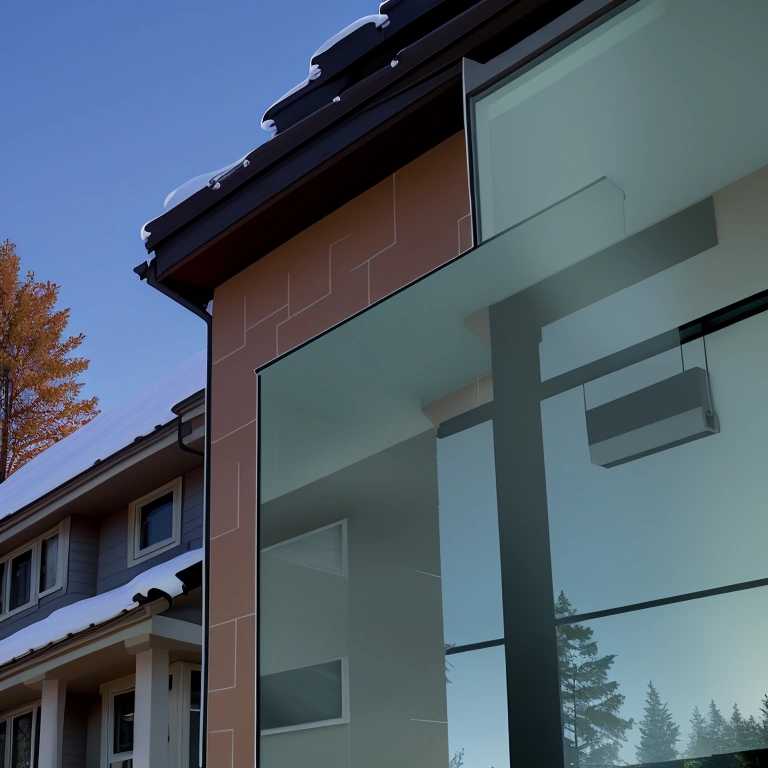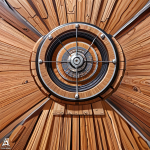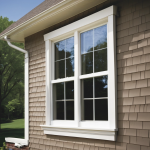Optimizing Window Performance: A Comparative Analysis of Glass Technologies for Energy Efficiency Across US Climate Zones
Introduction: The Overlooked Key to Energy Efficiency
In an era defined by escalating energy costs and a heightened awareness of environmental impact, homeowners and building professionals are increasingly seeking innovative solutions to enhance energy efficiency. Windows, often overlooked, represent a significant source of heat gain and heat loss in buildings, acting as a thermal bridge between the interior and exterior environments. Optimizing window performance through advanced glass technologies offers a tangible pathway to reducing energy consumption, lowering utility bills, and creating more comfortable living spaces.
This article delves into a comparative analysis of various window glass technologies, examining their efficacy across diverse US climate zones, with a focus on energy efficiency, cost-effectiveness, and condensation resistance. From the frigid landscapes of Minnesota to the sun-drenched expanses of Arizona, understanding the nuances of glass technology is paramount for informed decision-making, particularly when considering window replacement or home improvement projects. The strategic selection of energy-efficient windows directly translates into substantial savings on heating and cooling costs, contributing to both financial well-being and a reduced carbon footprint.
Beyond the immediate benefits of reduced utility bills, investing in energy-efficient windows contributes significantly to the overall value and comfort of a home. Technologies like Low-E coatings, which selectively filter solar radiation, are crucial in minimizing unwanted heat gain during summer months and retaining heat during winter. Double glazing and triple glazing, often combined with gas fills like argon or krypton, further enhance insulation by creating thermal barriers that impede heat transfer. These advancements not only regulate indoor temperatures but also mitigate condensation, preventing moisture damage and promoting healthier indoor air quality.
Understanding the science behind these technologies empowers homeowners to make informed choices, aligning their window selections with specific climate demands and energy efficiency goals. The ongoing evolution of window glass technology promises even greater energy savings and enhanced performance. Innovations such as dynamic glazing, which automatically adjusts its tint based on sunlight intensity, offer the potential for real-time optimization of solar heat gain and glare control. Aerogel windows, utilizing a highly porous solid material as insulation, represent a cutting-edge approach to minimizing heat transfer. Furthermore, nanotechnology is being explored to develop even more effective Low-E coatings and self-cleaning glass surfaces, reducing maintenance and maximizing energy efficiency. By staying abreast of these advancements, homeowners can make future-proof investments in window technology, ensuring long-term energy savings and a comfortable, sustainable living environment. The interplay between advanced materials, innovative designs, and climate-specific considerations will continue to drive the development of energy-efficient windows, making them an increasingly vital component of modern homes.
Understanding Key Window Glass Technologies
Several key technologies contribute to the energy efficiency of modern windows, directly impacting long-term savings on utility bills and enhancing overall home comfort. Low-E (low-emissivity) coatings represent a cornerstone of modern energy-efficient windows. These microscopically thin, virtually invisible layers of metal oxide are applied to the glass surface to minimize the amount of infrared and ultraviolet light that can pass through, thereby reducing heat gain in the summer and heat loss in the winter. By selectively blocking specific wavelengths, Low-E coatings allow ample visible light to enter, maintaining brightness while dramatically improving thermal performance and condensation resistance.
The evolution of Low-E coatings has been a game-changer in window replacement and home improvement projects, offering a tangible return on investment through reduced energy consumption. Double glazing and triple glazing are fundamental strategies for enhancing window insulation. Double glazing involves using two panes of glass separated by an air or gas-filled space, while triple glazing utilizes three panes. This interstitial space acts as a thermal barrier, significantly reducing heat transfer compared to single-pane windows.
The effectiveness of this barrier is further amplified by the type of gas used to fill the space. Gas fills, such as argon or krypton, are denser than air and possess lower thermal conductivity, further inhibiting convective heat transfer. Argon is a cost-effective option commonly used in double-glazed windows, while krypton, with its superior insulating properties, is often employed in high-performance triple-glazed units, particularly beneficial in colder US climate zones. Spectrally selective coatings represent an advanced refinement of Low-E technology, meticulously engineered to filter specific wavelengths of sunlight with unparalleled precision.
These coatings are designed to maximize visible light transmission, ensuring a bright and naturally lit interior, while simultaneously minimizing solar heat gain, preventing overheating and reducing the reliance on air conditioning. This technology is particularly valuable in regions with hot summers and significant solar exposure. Furthermore, innovations in nanotechnology are paving the way for dynamic glazing solutions, where window tint and solar heat gain coefficient can be adjusted in real-time based on sunlight intensity and user preferences. Emerging technologies like aerogel windows, while currently more expensive, promise exceptional insulation values, potentially revolutionizing energy efficiency in window design. Careful consideration of these factors, along with regional exterior material recommendations and siding choices, is crucial for optimizing energy efficiency and minimizing environmental impact.
The US Climate Zone Map: A Foundation for Informed Decisions
The US Department of Energy, through the International Energy Conservation Code (IECC), divides the United States into eight climate zones, each characterized by distinct temperature ranges and heating/cooling degree days. Zone 1, encompassing southern Florida and Hawaii, experiences hot, humid summers and mild winters, necessitating windows that minimize solar heat gain. Zone 7, covering northern regions like Alaska and Minnesota, faces extremely cold winters and short summers, demanding windows with exceptional insulation to prevent heat loss.
Zone 4, a temperate zone including areas like Washington D.C., requires a balance between heat gain and heat loss management. Understanding these regional variations is crucial for selecting appropriate glass technologies. The IECC’s delineation of US climate zones serves as the bedrock for informed decision-making in window selection, directly impacting energy efficiency and subsequent utility bills. Each zone presents unique challenges and opportunities for optimizing window performance. For instance, while Zone 1 benefits significantly from spectrally selective coatings on energy-efficient windows to reject solar heat, Zone 5, which includes states like Colorado, requires a more balanced approach, often leveraging double glazing with argon gas fills to mitigate both heat gain in the summer and heat loss in the winter.
Ignoring these climate-specific needs can lead to increased energy consumption and reduced home comfort, highlighting the importance of consulting the IECC guidelines during any window replacement or home improvement project. Delving deeper into specific technologies, the choice between double glazing and triple glazing is often dictated by the severity of the climate zone. In colder regions like Zone 6, which includes states such as North Dakota, the enhanced insulation provided by triple glazing, often combined with krypton gas fills, becomes increasingly justifiable despite the higher upfront cost.
The superior thermal performance minimizes heat loss, reducing the strain on heating systems and contributing to long-term energy savings. Furthermore, Low-E coatings play a crucial role in all climate zones, reflecting infrared radiation to keep homes cooler in the summer and warmer in the winter. The specific type of Low-E coating can be tailored to each zone, maximizing its effectiveness in either blocking solar heat gain or retaining interior heat. Beyond insulation and coatings, condensation resistance is another critical factor influenced by climate zone and window technology.
High humidity environments, such as those found in Zone 2 along the Gulf Coast, can lead to condensation on window surfaces, potentially causing mold and structural damage. Energy-efficient windows with improved thermal performance and advanced spacer systems help minimize condensation by maintaining a warmer interior glass temperature. Emerging technologies like aerogel windows and dynamic glazing offer even greater potential for climate-adaptive performance, promising significant advancements in energy efficiency and comfort. Moreover, ongoing research in nanotechnology is paving the way for even more effective and durable window coatings, further enhancing the ability of windows to respond intelligently to varying climate conditions.
Climate-Specific Performance Analysis: Real-World Examples
In Zone 1, characterized by persistently high temperatures and humidity, spectrally selective Low-E coatings are indispensable for energy-efficient windows. These coatings excel at reducing solar heat gain, effectively blocking a significant portion of the sun’s infrared radiation. This prevents excessive indoor temperatures, thereby minimizing the reliance on air conditioning and substantially reducing cooling-related utility bills. Double glazing with argon fill provides an additional layer of insulation, further impeding heat transfer without a dramatic increase in window replacement costs.
The combination optimizes energy efficiency while maintaining a comfortable indoor environment. Conversely, Zone 7, encompassing the northernmost regions of the continental US, faces prolonged and severe winters. Here, the priorities shift to maximizing heat retention. Triple glazing with krypton gas fills and Low-E coatings optimized for maximum insulation becomes the gold standard. Krypton, denser than argon, offers superior thermal resistance, further minimizing heat loss through the window. These advanced energy-efficient windows significantly decrease winter heating costs and enhance overall home comfort.
The initial investment in triple glazing is often recouped through long-term energy savings and reduced strain on heating systems. Zone 4, a transitional climate zone, demands a balanced approach to manage both heat gain and heat loss. Double glazing with argon fill and a Low-E coating engineered for moderate solar control typically provides an optimal solution. Spectrally selective coatings can be tailored to either prioritize heat rejection in the summer or allow some solar heat gain during the winter months, depending on the specific regional characteristics within Zone 4.
This adaptable approach to energy-efficient windows ensures year-round comfort and energy savings. For example, a homeowner in Phoenix, Arizona (Zone 2), reported a 30% reduction in their summer cooling bills after upgrading to spectrally selective Low-E windows. Conversely, a homeowner in Minneapolis, Minnesota (Zone 7), saw a 40% decrease in winter heating costs after installing triple-glazed windows with krypton fill. Furthermore, proper installation and attention to condensation resistance are crucial to maximizing the lifespan and performance of energy-efficient window technologies in all US climate zones. Emerging nanotechnology-based window coatings promise even greater control over heat transfer and light transmission, paving the way for even more efficient and climate-responsive window solutions.
Selecting the Right Glass Technology: A Practical Guide
Selecting the optimal glass technology for energy-efficient windows is a nuanced decision, deeply intertwined with a homeowner’s location within the US climate zones, their budgetary constraints, and their overarching energy efficiency aspirations. While triple glazing undeniably provides superior thermal performance, particularly in colder climates (Zones 6-8), the incremental cost may not yield a commensurate return on investment in milder regions (Zones 1-3). Double glazing, especially when coupled with argon gas fills, often presents a compelling cost-effective solution, striking a balance between upfront expense and long-term energy savings.
The decision-making process should begin with a professional energy audit to accurately quantify potential heat gain and heat loss. This analysis informs the selection of appropriate Low-E coatings and glazing configurations to maximize energy efficiency and minimize utility bills. Low-E coatings represent a cornerstone of modern energy-efficient windows, and are generally a worthwhile investment across all US climate zones. However, the specific type of Low-E coating should be carefully considered. Spectrally selective coatings, engineered to block a significant portion of solar heat gain while allowing ample visible light transmission, are particularly advantageous in warmer climates (Zones 1-3) where minimizing air conditioning load is paramount.
In colder climates (Zones 6-8), Low-E coatings designed to maximize solar heat gain can help reduce heating costs during the winter months. The evolution of Low-E glass, driven by nanotechnology, continues to yield coatings with enhanced performance characteristics, further optimizing energy savings. Understanding the science behind Low-E coatings is crucial for making informed decisions about window replacement and home improvement projects. Beyond insulation and solar control, condensation resistance is a crucial factor, particularly in humid regions or homes with poor ventilation.
Condensation not only detracts from the aesthetic appeal of windows but can also lead to mold growth and structural damage. Windows with improved edge-of-glass performance, achieved through warm-edge spacers and advanced frame designs, minimize temperature differentials across the glass surface, thereby reducing condensation formation. Selecting the right gas fills, such as argon or krypton, also contributes to improved thermal performance and condensation resistance. Ultimately, building professionals often recommend consulting with a qualified window installer or energy auditor to conduct a comprehensive assessment of specific needs and determine the most cost-effective and climate-appropriate solutions for optimizing window performance and maximizing energy savings.
Future Trends in Window Glass Technology
The future of window glass technology is poised for further innovation, promising even greater strides in energy efficiency and home comfort. Dynamic glazing, which can adjust its shading coefficient based on sunlight intensity, holds immense potential for optimizing energy efficiency in real-time. These ‘smart’ windows can significantly reduce heat gain during peak summer months, lessening the strain on air conditioning systems and leading to substantial savings on utility bills. Aerogel-filled windows, offering exceptional insulation properties far exceeding those of traditional gas fills like argon or krypton, are emerging as a promising alternative.
While currently more expensive, the superior thermal performance of aerogel windows makes them an attractive option for homeowners in extreme climates seeking maximum energy efficiency and reduced heat loss during winter months. These advancements directly address the core concerns of readers interested in energy-efficient windows and home improvement projects aimed at lowering their energy footprint. Research into nanotechnology is also yielding advanced coatings with enhanced solar control and self-cleaning capabilities. These microscopically thin coatings can be applied to window glass to selectively block infrared and ultraviolet radiation while maximizing the transmission of visible light.
This results in brighter, more comfortable interiors with reduced glare and fading of furnishings. Furthermore, self-cleaning properties minimize the need for manual window washing, offering a convenient and low-maintenance solution for homeowners. The development of spectrally selective coatings represents a significant advancement in Low-E coatings technology, allowing for tailored performance based on specific climate needs and building orientations. The NFRC provides detailed performance data on these coatings, enabling informed decision-making during window replacement projects. Beyond the glass itself, advancements in framing materials and installation techniques are contributing to overall window performance.
Improved weather stripping, thermal breaks, and airtight sealing methods minimize air leakage and condensation resistance, further reducing energy waste. Selecting the appropriate window frame material for a specific US climate zone is crucial for long-term durability and energy efficiency. For example, fiberglass frames offer excellent thermal performance and resistance to moisture, making them a suitable choice for coastal regions. As the IECC continues to evolve and set stricter energy efficiency standards, homeowners and builders must stay informed about these advancements to ensure compliance and maximize the benefits of modern window technology. The continued focus on sustainability, durability, and integration with smart home systems will drive future innovations in the energy-efficient windows market, offering even greater opportunities for cost savings and environmental stewardship.


